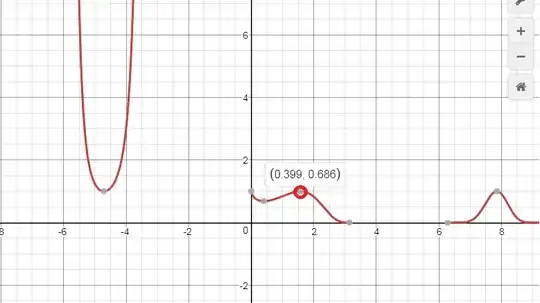I have come across the function $\sin^{x}(x)$ (or a in a different notation$(\sin(x)^{x})$ while practicing calculating its the first derivative. I then plot it in Desmos since I don't know how to graph this by hands yet. It seems that the graphing device suggests this function is discontinuous between the interval $[\pi ,2\pi ]$. The graph is also peculiar between the interval $[0 ,\pi ]$, while replicating itself for any interval $(2\pi ,3\pi )$, $(3\pi ,4\pi )$, $(5\pi ,6\pi )$, etc.
The behaviour of this function on the entire interval $(-\infty ,0)$ is also interesting. It doesn't look anywhere similar to $[0,+∞)$.
The first derivative of this function is $\sin^{x}(x)+\ln(\sin(x))+\frac{x\cos(x)}{\sin(x)}$. As with most other complex transcendental functions, this is not a simple derivative to work with. Could you show me some strategies to explore and graph this function manually. I would like to particularly find the red circle point found on this graph:
I have also tried to plot this on Wolfram and its shape is similar. Is this an accurate shape at all or is the graphing device errorneous somehow?
